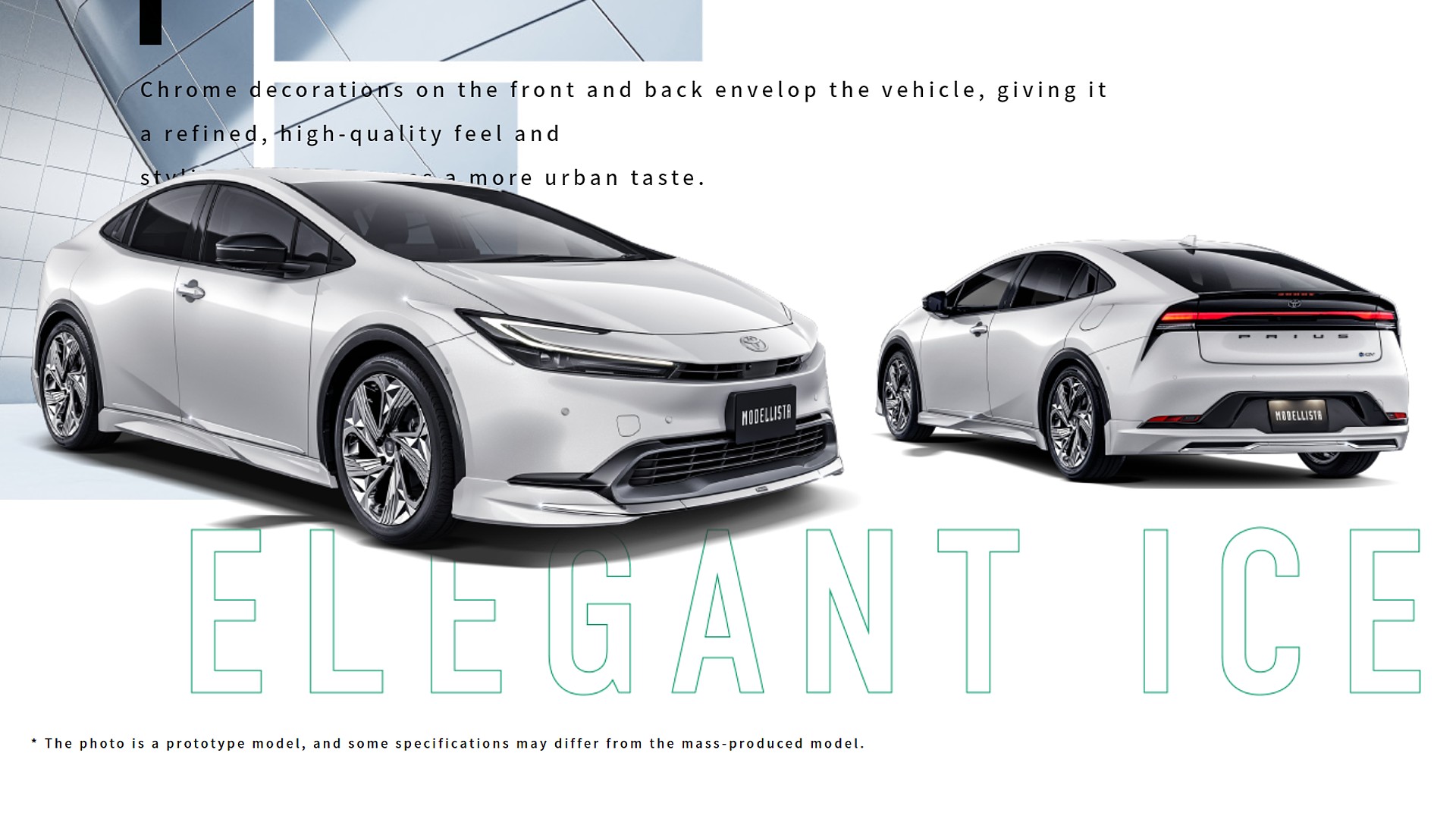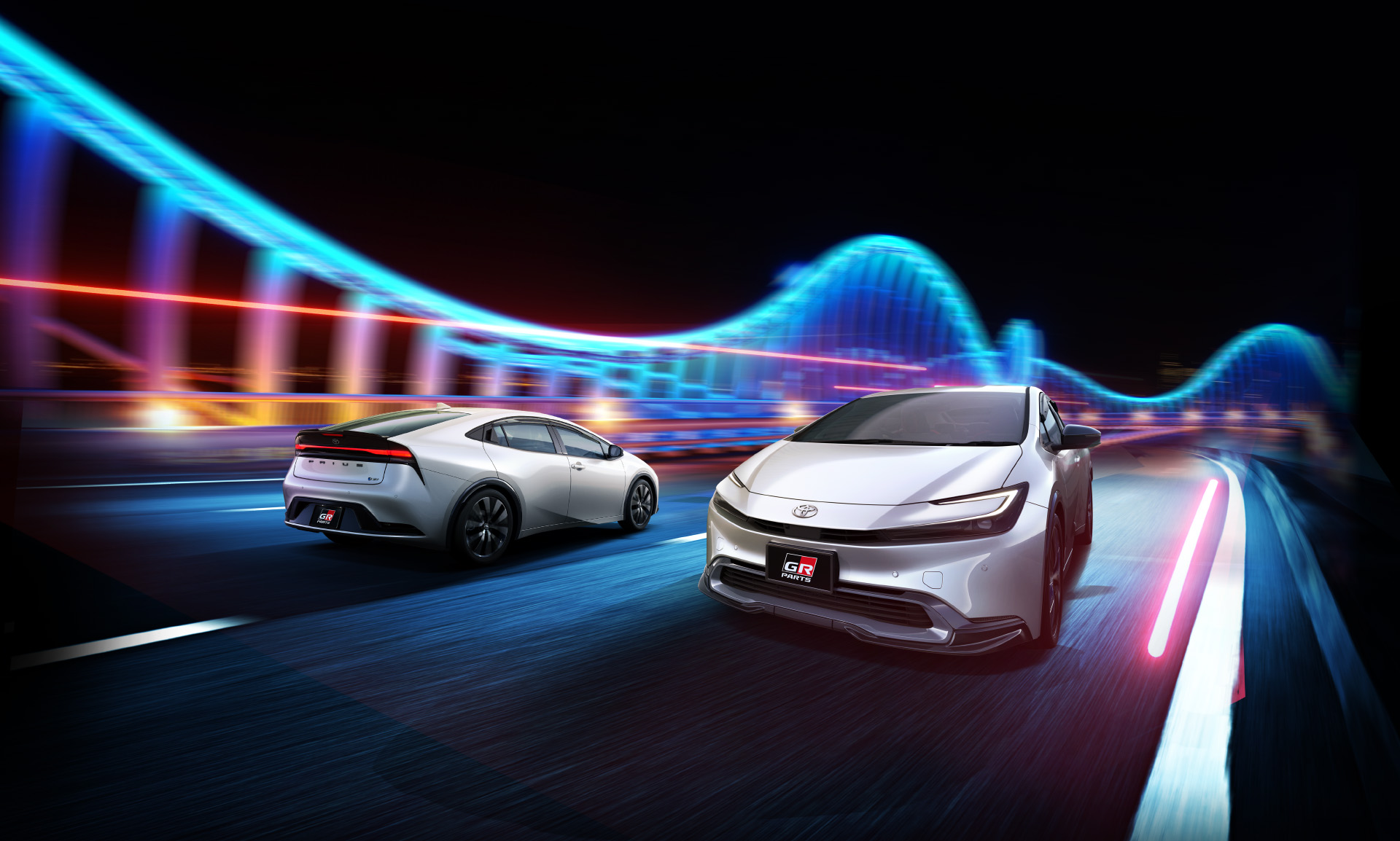The fifth generation of the Toyota Prius debuted last night, marking a significant departure from its predecessor’s busy design language while bringing more power and greater efficiency. Wasting no time, Toyota’s in-house tuners Modellista and GR Parts are preparing a raft of upgrades for the Japanese domestic market model.
Modellista will offer two distinct styling packages for the new Prius named ‘Elegant Ice’ and ‘Neo Advance’. One would argue that the bodykit is too complex for the clean design of the new Prius, but the result is still more appealing than the previous generation.
Read: 2023 Toyota Prius Coming To Europe Solely As A 220 HP PHEV
The Neo Advance looks sportier thanks to the front bumper extension with integrated LEDs and the blue accents on the central intake. On the other hand, the Elegant Ice adds body-colored garnish next to the headlights, and a pair of chrome-finished faux exhaust pipes at the back. Each styling kit has its own side skirts, but none of them includes a rear spoiler that would unnecessarily increase drag and potentially hurt the plug-in hybrid’s efficiency.
TRD’s Take On The New Prius
TRD hasn’t revealed much yet about its own “GR Parts” kit for the Toyota Prius, but they did publish a single photo showing the design of both ends. Changes include the black-finished front bumper garnish hugging the central intake and creating a more pronounced splitter, tinted add-ons for the side windows, and a lip spoiler on the base of the rear windshield. This is probably the most appealing option for the Prius, possibly preparing us for an upcoming GR Sport trim. Judging from the rest of the Toyota lineup, the Prius GR Sport is expected to combine sportier looks with a more focused suspension setup.
Pricing for the Modellista and TRD kits will be announced at a later date, together with a more detailed description of the available components.
The most powerful variant of the Toyota Prius plug-in hybrid range produces a combined 220 hp (164 kW / 223 PS) thanks to a 2.0-liter petrol engine, a front-mounted electric motor, and a larger 13.6 kWh lithium-ion battery. This represents a significant upgrade compared to its predecessor’s 120 hp (90 kW / 122 PS), bringing greater performance credentials for the first time in the history of the nameplate. Still, the Prius remains focused on efficiency, with Toyota promising more than double the EV range of the outgoing model for its latest PHEV.

















